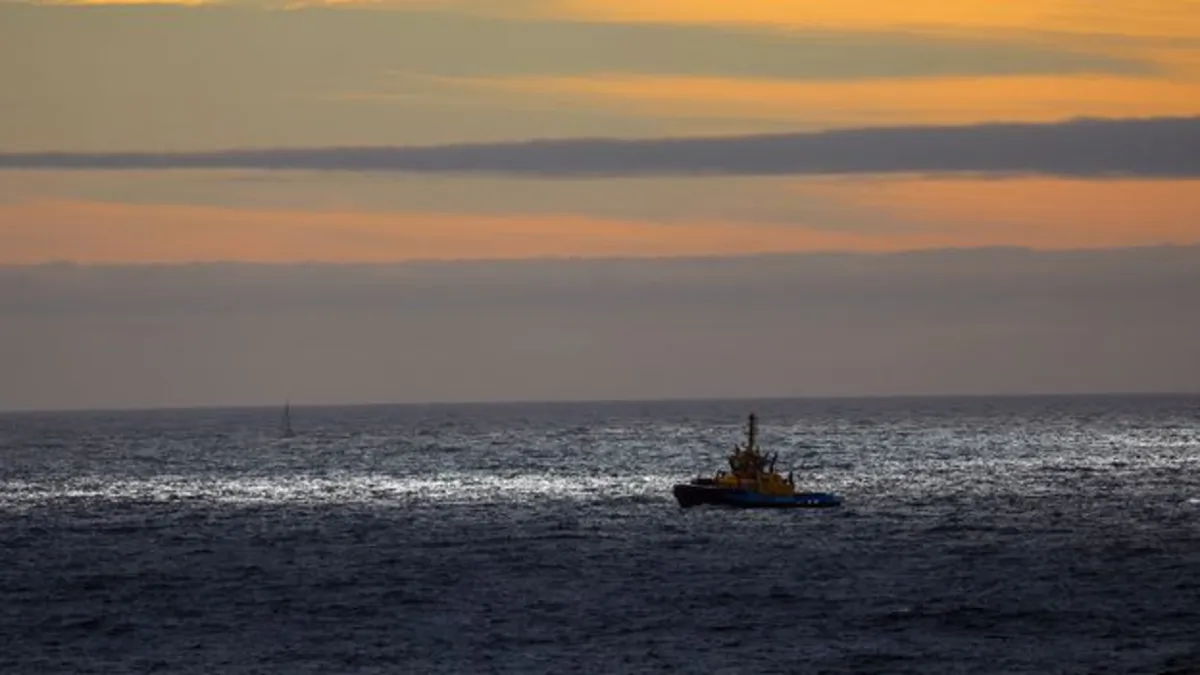
Tsunamis are notoriously challenging to detect in the open ocean as they race toward shore, often leaving little time for warning and evacuation. However, in the summer of 2025, scientists witnessed a significant breakthrough when they observed a tsunami unfold in real-time. This event was triggered by an 8.8 magnitude earthquake, the most powerful seismic activity recorded in nearly 15 years, which struck the eastern coast of Russia’s Kamchatka Peninsula in July 2025. The quake not only generated a massive tsunami but also sent waves racing outward at an astonishing speed of over 400 mph (644 km/h).
As the tsunami developed, alarms sounded across communities around the Pacific Ocean, prompting the evacuation of millions, including at least two million residents in Japan. Fortunately, the tsunami's impact was less severe than feared, as the waves that reached Hawaii were only about 5 feet (1.7 meters) high, causing minor flooding without significant damage. Most of the tsunami's energy dissipated in the open ocean, with the most potent waves striking unpopulated areas.
The tsunami's propagation triggered more than just fear; it disturbed the atmosphere, affecting global satellite navigation signals. This disturbance proved to be beneficial for scientists, allowing them to detect the tsunami almost in real-time. Remarkably, just a day prior, NASA had integrated an artificial intelligence component into their disaster alert system, dubbed Guardian, enabling automatic identification of significant events. Approximately 20 minutes after the Kamchatka earthquake, experts were already aware that tsunami waves were en route to Hawaii, providing critical lead time ahead of their arrival.
Jeffrey Anderson, a data scientist at the US National Center for Atmospheric Research and a key developer of the Guardian system, emphasized how revolutionary this capability is. “We could effectively say in near real-time, 'there is a tsunami,'” he stated. Although the concept of utilizing radio signals for near real-time tsunami detection has been around since the 1970s, it only materialized into a functioning system with the launch of Guardian in the 2020s.
In 2022, Anderson and a team from NASA’s Jet Propulsion Laboratory published a study detailing this innovative system. The underlying principle is that navigation satellite signals can register disturbances in the atmosphere caused by the up-and-down motion of the ocean surface during a tsunami. This wave motion displaces air above it, creating ripples in the ionosphere, a layer of charged particles located 30 to 190 miles above Earth’s surface.
When a tsunami forms in the open ocean, its waves are often low, measuring between 10-50 cm (4-20 inches), making them nearly invisible. However, the movement of such vast amounts of water generates disturbances that can be detected by navigation satellites, which communicate using dual frequencies. This disturbance alters the number of electrons in the ionosphere, causing delays in signal transmission. By measuring these delays, systems like Guardian can identify unusual atmospheric activity and detect the emergence of tsunamis.
Interestingly, the Guardian system’s ability to track atmospheric disturbances also extends to detecting volcanic eruptions, rocket launches, and underground nuclear tests. This versatility highlights the system's potential impact on various fields, not just tsunami safety. For instance, ripples in the ionosphere have previously confirmed underground nuclear tests conducted by North Korea in 2009, demonstrating the system's broad applicability.
Harold Tobin, a seismologist at the University of Washington, emphasized the importance of timely tsunami warnings, stating, “Minutes really matter for tsunami evacuation.” The Guardian system could provide crucial early warnings to communities, especially those located far from the tsunami's origin. Anderson also pointed out that monitoring the ionosphere could make it easier to detect tsunamis triggered by landslides, further enhancing the system's capabilities.
Despite the Guardian system's groundbreaking advancements, there are still limitations to consider. For example, the ionosphere takes several minutes to respond to a tsunami, which may not be swift enough for immediate local warnings. Nevertheless, for more distant communities, the system could provide essential early notifications, potentially saving lives during significant tsunami events.
Looking ahead, researchers like Elvira Astafyeva from the Paris Institute of Planetary Physics are developing a similar system in Europe, which aims to enhance tsunami monitoring capabilities across various ocean regions. Meanwhile, enhancements to the Guardian system are on the horizon, including the ability to predict wave behavior in real-time, which could offer invaluable data about the tsunami's size and impact areas.
As we continue to refine these technologies, the hope is to provide better early warning systems that could safeguard communities against the devastating effects of tsunamis and other natural disasters. With initiatives like Guardian paving the way, the future of tsunami safety looks promising.